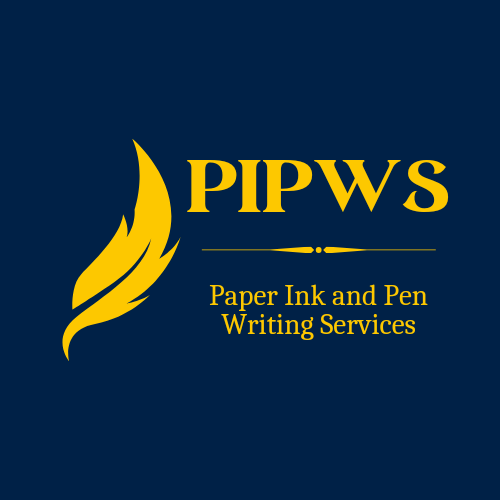Click the icon below to listen to the text.
I would suppose that you’re curious about MLA format because you’re a student curious to learn about the referencing style, yes? We’re exploring the subject as part of our introduction to the basics of academic writing. This exploration is based on the MLA format lesson in our Academic Writing Basics course. You can’t have academic writing without a referencing style, so we’re learning about one of the most common academic writing formats in the academic space.
MLA format, just like the APA format we studied in the previous academic writing lesson, is common for both student academic assignments and scholarly publications. You may therefore wonder how scholarly institutions ended up obtaining and deciding to use this referencing style. This article will provide an overview of the history and purpose of the MLA format. We will also discuss its features and identify academic tasks that apply it, after which we will proceed to the Chicago format in the next tutorial.
Table of Contents
Introduction to MLA Format
History
The MLA style is a product of the Modern Language Association organization. The first set of guidelines within the organization came from the Executive Director, Carlton Brown, and a member, Cyril Arthur Peerenboom, in 1931. The document was to be used for publication in the scholarly journal knowns as Publications of Modern Language Association of America (PMLA). The style sheet then became known as the PMLA style sheet.
William Riley, another executive director then published the first official set of formatting guidelines in 1951. The document was titled The MLA Style Sheet, which urged scholars to embrace uniformity when preparing manuscripts. The document formed the foundation for the MLA Handbook for Writers of Research Papers, Theses, and Dissertations, which continues to be available today, and the MLA Style Manual. Currently, an online version of the guidelines is available on The MLA Style Center.
Purpose
Various academic departments in learning institutions have adopted the style for classroom instruction. A standardized format enables literature students, scholars, and researchers to use it for formatting their writings. Such consistency facilitates a simpler reading experience. Literature and Language disciplines and Humanities continue to use the format today. Other institutions that use the format include journal publishers and academic and commercial presses. The style is especially common in:
- Art
- Music
- Religion
- Architecture
- History
- Philosophy
- Cultural studies
- Literary criticism
- Comparative literature
- Foreign language and literature
- English language and literature
MLA Format Features
The MLA Style Sheet dictated that authors who used the MLA format should:
- Combine in-text citations and footnotes.
- Short citations would be in parentheses within the text.
- Long citations would appear as footnotes.
Distinguishing elements of the MLA format include:
- Paper format and page layout
- Stylistic technicalities in quotations, footnotes, and abbreviations
- Author citation within the body
- Reference compilation at the last page of a document
Consistent changes have occurred in the guidelines, which resulted in their publication as updated editions. Institutions have used the 7th and 8th editions commonly. The current edition in use is the 9th edition published in April 2021. Today, the defining mark of the style is using in-text citations. The rules and standards in place involve:
- Paper choice and binding for printed submissions.
- Document setup for margins, spacing, indentation, alignment, font and font size, headers, and page numbers.
- Alphabetization in different areas of the paper
- Structure of headings and subheadings
- Document components such as the outline, title page, abstract, table of contents, and reference page
- Order of pages
- Referencing sources of information
- Use of graphics (tables and figures), lists, and musical scores
Additional factors the guidelines cover include writing styles concerning:
- Spelling and grammar
- Proper usage of abbreviations
- Spacing
- Punctuation
- Number rules
- Using quotations and paraphrasing.
- Attribution
MLA Format Assignments
We have already seen that the MLA style is most applicable in Literature, Languages, and Humanities. Literature explores different forms of written works, which include:
- Prose
- Novels
- Poetry
- Dramas
Other humanities include:
- Religious studies
- Law
- Visual and performing arts
Any type of assignment in these disciplines would use the format. Such include:
- Essays
- Literary analyses
- Research papers
- Literature reviews
- Abstracts
- Annotated bibliographies
- Case analyses
- Dialogues
- Executive summaries
- Introductions
- Memos
- Letters
- Research reviews
- Term papers
Information Sources

We have cross-checked our learning material about MLA format against other academic publications to ascertain the quality of our information. Doing so has allowed us to ensure the descriptions and illustrations we provide for concepts the lessons discuss are accurate and up-to-date. Some of the methods we use may be inaccessible in other publicly-available academic literature because they are our inventions. However, any other approach we have not developed is accessible through academic literature available for public use. Academic publications we have used to cross-check the academic writing concepts we have captured include:
- Fitchburg State University. (2021). What Citation Style Should I Use? Retrieved from https://fitchburgstate.libguides.com/citingyoursources/choosestyle
- Kirschenbaum, K & Barbeau, E. (2021). MLA Format: Everything You Need to Know Here. Retrieved from https://www.easybib.com/guides/citation-guides/mla-format/#edits
- Streefkerk, R. & Caulfield, J. (2021). MLA Format Guidelines | Free Template & Examples. Retrieved from https://www.scribbr.com/mla/formatting/
- The Modern Language Association. (2022). MLA History. Retrieved from https://www.mla.org/About-Us/About-the-MLA/MLA-Archives/Time-Lines/MLA-History
- The Modern Language Association. (2022). MLA Style. Retrieved from https://www.mla.org/About-Us/About-the-MLA/MLA-Archives/Time-Lines/MLA-Style.
- The UW. (2022). History of Science, Mathematics & Technology: Citing in MLA. Retrieved from https://guides.lib.uw.edu/c.php?g=344292&p=2319448
- Thesaurus.com. (2019). Works Cited: What is MLA Format? Retrieved from https://www.thesaurus.com/e/writing/mla-style/
- University of Waterloo. (n.d.). Types of Assignments and Tests. Retrieved from https://uwaterloo.ca/centre-for-teaching-excellence/teaching-resources/teaching-tips/developing-assignments/assignment-design/types-of-learning-activities
- William, S. (2021). How can I get help with Humanities Assignments? Retrieved from https://assignmenthelplite.com/blog/humanities-assignments/

